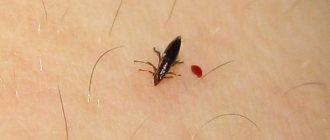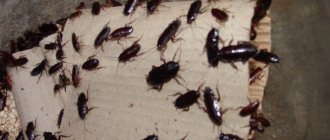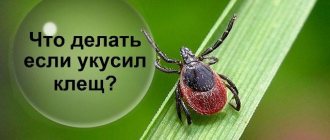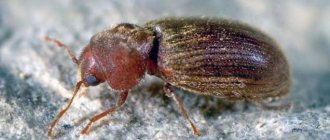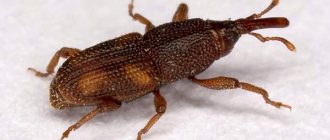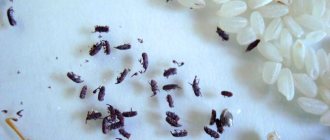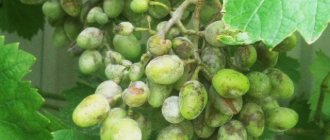Where to store beans?
- in ordinary cans, from which the air has previously been pumped out. Now on sale there are incredibly convenient sets for storing all kinds of cereals, dried fruits, grains, mushrooms, herbs, berries and other products, consisting of vacuum lids and a pump. Beans are poured into the jar and covered with a lid, on the surface of which there is a silicone valve. Air is pumped out through the valve using a small pump. In vacuum conditions, beans will last a long time, because neither fungus nor grain can reproduce without oxygen.
– storing beans in the refrigerator is a great option for those who don’t have too many beans. Grains placed in a bag or fabric bag will be perfectly stored. The main thing is to choose a place and container in which condensation will not accumulate
– Storing beans in the freezer is also a good option. The only bad thing about it is that since mid-summer, experienced housewives have been filling their freezers to capacity with strawberries, raspberries, dill, asparagus and other vitamin-rich berries and vegetables, so there may not be any valuable space for beans.
- balcony. Normal conditions for storing beans on the balcony are provided only with the arrival of cold weather. Before this, either store it in the refrigerator or dry/freeze it so as not to run into trouble in the form of holes from the grain.
– a pantry or closet is not the best place to store beans, but if the grains are clean, dry, and neutralized, they will overwinter well in a dark, secluded place.
Finally, we note that both during storage and before storing beans, beans are sorted from time to time, removing suspicious beans - wrinkled, dried, damaged beans.
Tatyana Kuzmenko, member of the editorial board of the online publication “AtmAgro. Agroindustrial Bulletin”
Bristle nodule weevil
Also small, only an oblong bug - less than half a centimeter.
Distributed everywhere, only the tundra zone did not attract its climate. Setae on the elytra, hence the name.
Protruding “surprised” eyes. The female is extremely fertile (more than 800 eggs); she lays eggs, roughly speaking, “anywhere.”
She simply scatters them wherever she has to: on the ground, on plants, wherever.
Uncovered, the eggs quickly dry out and become mobile at the slightest breeze. They fall to the ground and wait for the rains.
Rain mixes them with the soil. This is their habitat, the feeding place for future larvae.
The larvae hatch during the rainy season. If the drought drags on, some of them die without leaving the eggs.
The weevil has a curved, legless and eyeless larva, but it has a head.
The dining room of the larvae is the rhizosphere of the roots, menu: nodules on the roots of beans. While the larva is small, it rules inside the nodules; as it grows, it comes out.
The larva already has few nodules; along with feeding on them, it gnaws the surface of the roots.
For a month to a month and a half, the larva torments the root system of the bean, destroys the nodules and the roots themselves, then pupates in the ground.
Maybe close to the surface, or maybe thirty centimeters deep.
After another week and a half, hungry beetles emerge from the pupae. They go looking for young, succulent foliage.
They can find it in the upper tiers of beans if they are climbing, or they attack young bush leaves.
Some migrate to younger related legumes. The most far-sighted ones find alfalfa or clover.
There you can eat until it gets cold, and then overwinter in the soil under perennials.
If the weevil settles on beans, it harms it and subsequent crops in the crop rotation.
Losing nodules, the plant itself suffers and poorly enriches the soil with nitrogen. The voracious larvae thoroughly select this nitrogen along with the nodules.
The harvest drops significantly, and its quality also decreases: with damaged roots, the plant cannot function normally.
Control measures. If sown as early as possible, the beans will partially survive.
She will have time to rise and get stronger a little before the beetle wakes up. If there is alfalfa on the plot, it is worth thinking about what to choose.
The presence of a weevil on it will inevitably lead to it on the beans. When beans are more important, it is better to plow up the alfalfa and remove it from the garden.
Otherwise, the harmful beetle will be indestructible.
Agrotechnical measures:
- Plowing after legumes. Not immediately, when the beetle lay down for the winter, and it was already quite cold.
- Lack of legume perennials (grasses) per kilometer from bean crops.
- Preventing soil acidification (liming).
This curbs the weevil infestation. If it was already present, then the seeds are treated with available insecticides before sowing.
Aphid
Black and green aphids are among the most common garden pests. It is almost impossible to protect plants from their appearance, but there are several effective methods of control.
Aphids are small insects, 1 to 5 millimeters long, with small transparent wings that grow in midsummer. This helps aphids move long distances in search of new food sources.
The insect settles on fresh shoots and lower areas of leaves; ants participate in the settlement process and help the individuals to be distributed more evenly. The ants also protect the aphids from predators, and as a reward for their services they receive a sugary liquid secreted by the aphids.
Aphids on leaves can completely destroy a tree or plant.
These harmful insects pierce the surface of the stems, buds, and leaves of beans and suck the juice out of them. Injured plants grow slowly, shed their leaves and bear almost no fruit. In addition, these bean pests are carriers of viral diseases that are dangerous to legumes.
Fighting methods
There are several ways to deal with them. It is necessary to prepare a green soap emulsion of 2–4% and spray the damaged plants. You can water the beans with liquid fertilizers based on nettles; this composition is harmless to humans, but the aphids disappear within a few days. You should not abuse chemicals unless absolutely necessary: in addition to the fact that it makes the bean crop toxic, the chemicals destroy the natural enemies of aphids and it becomes even more difficult to fight this pest.
Garden plants such as dill, parsley, carrots and fennel attract hoverflies, the natural enemies of aphids, while thyme can repel black aphids with its scent.
Pests
Many housewives have noticed that up to ten larvae can develop in one bean grain. They gnaw through passages, leaving waste products. Such stocks are unsuitable for consumption and cannot be used as seed.
Bean grain
The bug, about 2-5 mm, is oval, has a black shell. It is characterized by active life activity and intensive reproduction. Destroys bean stocks within one year.
The most effective control method is low temperature. Planting material must be absolutely healthy. If the bugs do appear, the crops are treated with Decis or Metafox (twice is enough). The first is shortly before flowering, ten days later repeat everything. You need to collect the beans before the pod dries and opens.
Sprout fly
The insect is gray with black stripes on the back (size about 5 mm). If pupae are left in the ground for the winter, then by May they will turn into flies. They lay eggs in the soil. If there is a drought, they will die and there will be no offspring. The larvae usually attack fruits for planting. These pests love cool air, when they are most active.
Slugs
These are large mollusks (up to 7 cm in length). They leave behind clearly visible silvery-white marks. Slugs are not visible during the day; they are active in the dark. Slugs are most afraid of low humidity and temperatures below + 7 degrees.
Such pests are easy to lure to dark beer. To do this, a plastic bottle without a cap is buried in the ground up to the neck and filled to half the volume with beer. Slugs simply drown in liquid. For full effect, the procedure is repeated several times.
Aphid
It is quite small (only 1-5 mm). Preventive measures against it are powerless. The favorite place is young shoots and the lower parts of leaves. Insects suck the juice out of them and transmit viral diseases.
To eliminate pests, plants are watered with 4% green soap emulsion and liquid nettle fertilizer. These substances do not harm people, but aphids are very sensitive to them. Chemicals are used in extreme cases. You can also plant dill, thyme, and fennel next to the beans.
See also
How to quickly germinate beans at home, rules and best methods
Read
Bean pests: description and control methods
Bean grain
We already mentioned the bean grain when we talked about storing beans. Indeed, it is unrealistic to keep beans safe and sound if they contain at least one grain. What kind of animal is this?
And this animal is a small beetle up to half a centimeter in size, brown in color with a yellow-red belly and tips of the elytra. This pest of beans (and not only - the weevil also affects peas, soybeans, beans, lentils, chickpeas, although not so readily) appears when the beans begin to ripen. The insect reproduces both in the garden and in storage areas at optimal temperatures - from 15 to 30 degrees. Female beetle beetles lay larvae in groups on seeds, in cracks of dry beans, between grains, etc. There are 40-50 eggs in one clutch. For 4 days, the larvae crawl freely, after which they bite into beans, where they develop until metamorphosis. A beetle can produce more than three generations in a year; one development cycle takes 1-2 months.
Small dark holes are visible on the surface of damaged grains. 10-20 larvae can live in one grain at the same time.
How to deal with bean weevil?
First, let's talk about bean pest prevention. Remove the beans from the garden before they crack, dry them a little, peel them, then pour them onto a baking sheet to disinfect the grains and heat them in the oven at 50 degrees for 20 minutes. There is another option for getting rid of pests from beans - placing them in the freezer for three days. In both the first and second cases, the larvae or adults will die.
Beans should be stored in tightly closed jars, or even better - in jars from which the air has been pumped out. Beans are well stored in the refrigerator or on the balcony or loggia.
Before planting, the grains are pickled - in peroxide, potassium permanganate or just hot water (70-80 degrees).
Chemical control of bean insects should be used if no other methods help. For example, the weevil really does not like the smell of garlic and dill, so if you plant them next to a bean bed, the pest will most likely bypass your beans.
Decis or Aktara (one-time treatment before flowering) will help you deal with bean grains. But you can take biological products with a wide spectrum of action - Gaupsin, Verticillin (spraying before flowering and after flowering). Be sure to take into account the waiting period, especially when it comes to green beans.
Sprout fly
This animal works not only on beans, but also on many other seedlings. An adult has the appearance of an inconspicuous gray-brown fly up to 0.5 cm long, with dark stripes on its back.
The sprout fly on beans damages the grains during germination. The pupae of this insect overwinter in the soil; in April or early May, flies emerge from them and lay eggs in the soil.
If the soil is moist, after a week or a little more, larvae 0.5-0.7 cm long emerge from them and begin to explore the ground in search of food. As a rule, they are embedded in the place of bean grains where the sprout emerges. Damaged seedlings rot or produce weak plants. And the larvae pupate after two to three weeks.
How to deal with sprout fly on beans?
First, sow beans as early as possible so that the plants are stronger by the time the larvae emerge from the eggs. When the soil has warmed up to 10 degrees, sow.
Secondly, the sprout fly prefers to lay eggs in moist soil, with particles of poorly rotted manure. Therefore, either apply fresh manure in the fall rather than in the spring, or use well-rotted manure in the beds.
To repel sprout flies from bean plantings in late April or early May, water the plantings with garlic infusion, or plant garlic nearby. You can also dust the crops with tobacco dust, ground pepper, and ash.
And only as a last resort, this bean pest requires the use of insecticides (Fufanon, Tanrek), according to the instructions.
Aphids on beans
It hardly makes sense to describe what aphids are and what aphids look like on beans. Therefore, let’s immediately move on to the prevention and control of aphids on beans:
– plant strong-smelling plants nearby – garlic, calendula, pelargonium. The strong smell will confuse the aphids.
– spray with strong-smelling infusions – from horseradish roots, tomato tops, onion peels, etc.
– if there are very few aphids on the beans, you can carefully remove them with your hands, or you can attract hover flies, ladybugs or lacewings into the garden. Who, who, and these insects will quickly deal with aphids
– if aphids are already very annoying to your beans, you can turn to chemicals – “Aktara”, “Intavir”, “Agrovertin”. Also, against aphids on beans, you can use biological products such as Gaupsin, Trichodermin, Planriz in a tank mixture.
Prevention
Before we talk about methods of combating bean weevil, let us remind you of preventive measures designed to prevent the spread of this most dangerous pest, starting directly with sowing.
- To avoid infesting the site with a pest, you need to carefully select seed material. If there is a large damage to the grains, it is better not to use them; if the damage is small, you can place the seeds for an hour in an aqueous saline solution, the density of which is one kilogram of salt per three-liter jar of water.
- It is worth sowing as early as possible, this will give the plant a reserve to bloom before the mass emergence of the grains.
- Before bean formation, legume crops can be treated with insecticides such as Arrivo, Aktara or the like.
- When storing at home, after carefully sorting the grains, they should be placed in glass or metal containers. A good place for storage would be loggias and balconies with negative temperatures in winter.
- In granaries, preventive treatment of bottoms should be carried out: cleaning, drying, disinfection.
Bean seed propagation
The necessary conditions
For insect reproduction, the following conditions are necessary:
- favorable nutrient environment: fields with legumes, warehouses;
- ambient temperature from 18 to 30 degrees;
- humidity within 75–90%.
Pests, subject to the above conditions, for example, in some warehouses, can reproduce all year round. Under field conditions, there are usually 2 periods of insect development. At low ambient temperatures, beetles fall into torpor.
Reproduction process
A few days after mating, female beetles find ripening bean fruits,
They gnaw holes on them, deep into which they lay eggs, about 20 eggs per plant. Each female is very fertile and can lay up to 200 eggs at a time. After 35–45 days, insect larvae emerge from the eggs, which develop for about 3 weeks, eating the internal contents of the plant fruit. The entire body of the larva is covered with bristles; it has no legs. Then the larva transforms into a pupa. At the appointed time, the already adult insect comes out through the round holes. One complete chain of appearance and development of an insect, depending on conditions, is approximately 105–110 days.
Wintering
Insects almost always overwinter in storage or (in less severe winters) in plant debris. At low temperatures they die. The awakening of beetles begins at +13 degrees, and they become active and capable of long flights at +17 degrees. When searching for fields with beans, soybeans, beans, and lentils, intermediate plants can be used: lupine, chinu, alfalfa and some others. The closest relative of this insect can be considered the pea weevil.
Bean weevil - methods of control
The best protection for crops from pests is prevention. And if necessary, control measures must be applied promptly and correctly, otherwise there is a risk of losing most of the crop. Control methods are used both in the field and in storage warehouses.
To prevent the appearance of grains in the field, the material for sowing is carefully selected, the crop is harvested on time before the fruits begin to crack, and as soon as the fruits are formed, insecticides are used - “Aktara”, “Arrivo”, “Fastak”. The first time is processed during the formation of fruits, the second time about a month before harvesting the fruits. When used correctly, the drugs retain their effect for a long time and are safe for animals and people.
Industrial grain storage warehouses use chemical treatment and fumigation. At home, the fruits are frozen or heated. The grain dies at plus sixty degrees within an hour.
Low temperatures (-10 and below) are also destructive for pests. The beans should remain in the freezer for at least four days. Fumigation and chemical treatment are not carried out independently, at home.
How to Preserve Green Beans
Green beans have a special taste and delicate aroma. If you want to preserve the delicate spring flavor of young beans, you can simply freeze them.
To freeze, you need to take fresh, just picked pods. Green bean pods should be thoroughly washed and the tails cut off. You also need to cut out all the black spots and damage on the surface of the pod. If you cut the beans into small pieces before cooking, do so. Bean pods can be frozen whole without cutting.
Then the beans need to be blanched. Place the beans in boiling water for three minutes and place a large cup of ice next to them. When the three minutes are up, remove the beans from the boiling water and plunge into ice water. This method of processing beans will preserve maximum beneficial properties and taste.
Beans must be thoroughly dried before freezing. Place the processed bean pieces on a clean napkin and allow excess water to drain. Otherwise, ice crystals will form on the beans, which will deprive the green beans of their special flavor. After drying, distribute the pods into bags so that if necessary, take only one portion and do not defrost the excess.
Beans are a tasty and nutritious product that is used in many dishes. Vegetarians cannot imagine life without beans, because these beans can be compared with meat in terms of the amount of protein. Regular consumption of beans helps improve the functioning of the kidneys, gastrointestinal tract, and nervous system. If you eat beans often, you won't be afraid of plaque and tartar. Plant and grow beans, protect the crop from bugs, and then you can enjoy the taste and nutritional value of this product all year round.
how to properly store shelled walnuts
Common Pest Types
The small beetle, which was infested by other cereals brought from the store, penetrates into cracks and corners, latches and poorly closed containers with cereals. It mercilessly eats reserves, leaving behind traces of vital activity. It is very difficult to get rid of them, because if there are acceptable conditions for their life, they actively reproduce. Their favorite delicacy is buckwheat, rice, semolina, millet, and dried fruits. The appearance of bugs in the cereal causes it to become lumpy; such a product should not be eaten. Allergies, diarrhea, toxic manifestations - this is a list of possible troubles. To remove these insects, every effort should be made.
The red flour beetle grows in places where there is a large accumulation of cereals. Mills, bakeries, feed mills - this is a list of its most common habitats. If food is heavily stale and shows signs of rotting, this is favorable soil for insects to breed. The appearance of bugs in the croup is indicated by characteristic traces: the clumping of particles into lumps, excrement and larvae.
The bread grinder is distinguished by its high fertility and vitality, and breeding this insect will not be easy at all. Tiny elongated bugs, 1.8–3.5 mm long, are brownish in color. They often crawl out onto window sills and die there. They damage cereals, tea, coffee, grain, flour products, and also eat crackers, nuts, and herbs. It is difficult to get rid of these insects: the difficulty lies in the fact that they practically do not come out of their hiding places. The visible appearance indicates excessive reproduction of bugs in cereals and their high density.
What to do if beans have bugs
The most common pests that attack beans are bean weevil, sprout fly, slugs, and aphids. Gardeners need knowledge about the causes of the formation of these parasites - this will help protect the product. Control measures will also be different.
Bean grain
This insect is found throughout Russia, but often appears in regions with warmer climates. The pest looks like a small beetle - 2-5 mm. The bean grain looks like this in the photo.
Since the grain is thermophilic, it will die when the temperature drops. The parasite is transferred from the field to a room where it lives under favorable conditions. If burrows are noticed in the beans, this indicates infection with weevil.
Measures to combat weevil:
- Severely affected cereals must be thrown away or heated in the oven, which will lead to the death of the larvae.
- To prevent the grain from multiplying, add bay leaves or garlic cloves to the cereal. If they appear, you can put cloves or nutmeg in their location to scare them away.
- To prevent their spread, pack the beans in a tightly closed container.
- To avoid caking and rotting of the product, do not purchase it in reserve.
- If you suspect a pest, place the container with beans in the refrigerator compartment or, in case of cool weather outside, on the balcony.
- To prevent the spread of weevil, regularly clean cabinets with soapy water.
Sprout fly
Spoils bean grains when they sprout. The larvae remain in the ground, and in early spring flies emerge from them, leaving eggs in the ground. If the soil is moist, insects hatch from them in 7-10 days. They strengthen in the place of the bean where the sprout grows. Infected seedlings rot and turn black or produce weakened plants. The larvae pupate in 14-20 days.
To combat the germ fly you need:
- Sow as early as possible so that by the time the larvae pupate, the bean sprouts are strong.
- Apply fresh fertilizer in the fall, not in the spring, as the fly loves wet soil with poorly rotted fertilizer.
- To repel insects from bean sprouts in the spring, water the plantings with garlic infusion or plant garlic nearby. You can sprinkle the crops with ground pepper or ash.
Please note: In rare circumstances, this pest requires chemical intervention - Fufanon, Tanrek.
Slugs
Slugs feed on young beans, preventing the plant from developing and bearing fruit. They can also be present in the bean crop. They prefer humidity and moderate temperatures. They tolerate winter well, and in the spring they can attack the crop again.
To combat them on the site, hedgehogs, frogs, and toads are suitable. You can build artificial barriers, since slugs, due to their bodies, cannot crawl over scratchy obstacles. To do this, you need to make strips of salt, ash or sand around the crop.
You can fight them using chemical methods; to do this, you need to scatter the drug next to the plants. An effective way is to collect it manually. This should be done in the early morning when pests are most active.
Aphids on beans
A pest such as aphids drinks juices from the plant. There are many varieties, but there is a pea species that attacks legumes. The greatest damage occurs when the crop blooms. It's difficult to fight, but possible.
There are preventive methods to prevent the problem. Next to the beans you need to plant fragrant plants - garlic, tansy, calendula or spray with an essence with a strong smell (from tomato tops, horseradish rhizomes, onion peels, etc.). You can lure ladybugs, which are known plant protectors from aphids. To attract them, the site must have at least one of the following plants:
- dill;
- cornflower;
- calendula;
- coriander;
- geranium;
- tansy;
- dandelion.
If there are a lot of aphids, then you need to use chemicals - Aktara, Agrovertin.
What are the main bean pests?
There are many parasites that prefer beans. In the table we will analyze the main subspecies.
| Bean grain | The insect lives in all regions. However, the parasite most often affects beans in southern territories with warm climates. The pest is small. It grows only up to 2-5 mm. The body has an oval shape. The shell is black. There are yellow-gray stripes on the back. The grain can travel over long distances. The insect can go without food for a long time. The bean weevil is a heat-loving insect. Does not tolerate drops in temperature. When cold, the pest dies instantly. The insect overwinters indoors or in the field under sprouts. The parasite awakens in the spring at temperatures above 15 degrees. |
| Sprout fly | The insect is gray in color. There is darkening in the form of stripes on the back. The length does not exceed 4 mm. The parasite lays eggs in the spring. After just 10 days, larvae can appear. In the absence of favorable conditions, the new generation will die. The young ones burrow directly into the beans. They can infect a plant both before and after harvest. |
| Slugs | The presence of such pests can be recognized by the presence of characteristic slimy traces. During the day, the parasite is in the shade and is quite difficult to detect. At night, the pest goes in search of food. The parasite dies when the temperature drops below 7 degrees. |
| Aphid | This is one of the most common pests of beans and other crops. The size of the parasite does not exceed 5 millimeters. The representative drinks the juice of young plants. This contributes to the death of the plant and the inability to form a crop. |
| Bread grinder | Beans are not the basis of the parasite’s diet. The parasite affects her only in the absence of other treats. |
| Parasites often crawl onto window sills and die there. These insects are quite difficult to get rid of. |
All of the above bugs make it impossible to use the crop. All the farmer’s efforts come to nothing. In addition, there are significant financial losses.
Beans with bugs cannot be stored for long; they spoil
How to save beans from bruchus
To prevent the bean weevil from affecting your bean harvest, try to reschedule its harvesting to an earlier date. In addition, carefully destroy plant debris in the fall, because this insect usually overwinters under them.
Before sowing the seeds, soak the bean seeds for 5-10 minutes in a saline solution. To prepare it, 300 grams of salt are dissolved in a liter of water. Floating seeds are discarded, as they may be infected with weevil larvae.
I advise storing seeds intended for consumption in an unheated cellar at a temperature below 0 degrees. If the harvest is not rich, freeze well-dried grains in the freezer at a temperature below -12 degrees for at least 24 hours.
You will get a similar effect if you heat the grain in an oven heated to +64-65 degrees for one hour. Moreover, the beans are laid out on a baking sheet in a layer of no more than 4 centimeters.
Bean weevil is difficult to protect against. So even strict adherence to agricultural technology does not guarantee the absence of problems with the pest. Nevertheless, observing crop rotation and timely harvesting of tops minimizes the risk of Bruchus infesting bean plantings.
Watch the video to see how easy it is to store grain beans so they don’t spoil.
Damage caused by pea grains
Until the beetle gets out of the pea, it is difficult to detect the infection, since there is no visible damage. You can only notice a dark spot on the seed coat. The larvae damage peas in fields, and adults damage peas in storage.
Spoiled peas lose about 40% of their weight, and their seed quality is impaired. Damaged seeds do not germinate well. In addition, the excrement of the larvae contains harmful substances, so damaged peas should not only be eaten, but also fed to animals.
The pest can fly to new places from neighboring fields or enter with infected grains. Pea weevils are monophages, that is, they feed exclusively on cultivated peas.
If you find an error, please select a piece of text and press Ctrl+Enter.
How does grain harm beans?
The female bean weevil lays eggs on mature beans with a dried out shell in the cracks formed by the dorsal seam of the bean. She can gnaw through grooves on its seam.
This insect can destroy the entire crop
Through these depressions, the beetle, using an ovipositor, lays eggs inside the bean. Later, the larvae eat out the chamber, where they pupate.
Upon careful examination, on the surface of the grains of damaged beans, you can see darkish “windows” rounded to 1-2 mm in diameter, closed by the undamaged shell of the grain.
10-20 larvae can simultaneously develop in one grain, making it completely unsuitable for food or seed purposes.
The grain beetle is the most dangerous pest among the enemies of this crop. Once on the site, once in the pods, it immediately begins to rapidly multiply.
One infected bean in a bag can spell doom for the entire harvest.
Rules for storing green beans
Caryopsis larvae infect not only the plant's beans, but also the pods. Thus, before making bean preparations for the winter, the pods should also be sorted. The best way to preserve the beneficial properties of the product is freezing. How to freeze green beans:
- Rinse the pods in cool running water.
- Remove areas with dark spots, dots, and dents. Inspect for disease and pest damage.
- It is convenient to cut into oblong pieces or finely chop in advance.
- Blanch: pour boiling water over the raw material and cool sharply in ice water or place in a snow mass.
- Dry the prepared semi-finished products with a towel or in an electric dryer. Do not allow ice to appear on the product before storing - this will cause the product to soften and lose its taste.
- Place into bags or containers in portions. Repeated freezing is unacceptable.
Please note: Beans are one of the types of products that can be stored for a long time without losing their beneficial and taste qualities. However, to ensure the freshness of the legume crop, it is necessary to follow simple rules... You need to sort the grains, checking for the appearance of weevils, store them in a dry and cool place and ensure tightness
It is necessary to sort the grains, checking for the appearance of weevils, store them in a dry and cool place and ensure tightness.
There is also a risk of seeing bugs in the product when growing plants on your own in your garden. Some bean pests appear in legumes at the ripening stage and pose a threat to the crop even before harvesting.
Therefore, it is important to follow preventive measures and storage rules.
How to prepare beans for storage
To prevent infection, beans should be properly prepared for further storage. First, the beans are sorted and the excess is removed. After this, the grains are dried. To do this, the product is placed in the oven and kept there for 5 minutes at a temperature of 80-90 degrees.
After heating, the grains lose their ability to germinate. In addition, a long shelf life is ensured.
After pre-treatment, the grains can be placed in fabric bags, glass jars or plastic containers. Store at a humidity of about 50%.
This video will tell you how to deal with bugs in beans:
Interesting facts about beans
This is one of the most ancient cultures known to mankind. The first written mentions of it date back to 3000 BC. e. They are contained in a Chinese manuscript, but these legumes were not known to Europeans of that era. In Spain, they became acquainted with both regular and green beans only after Columbus’s voyage. Moreover, at first, beans, like potatoes, were grown as an ornamental plant in small pots. By the way, in England they learned about beans even later; they were first brought here by the Dutch, so for a long time they were called Dutch beans.
Currently, there are more than 200 varieties of beans in the world, and all of them, although they have different compositions, are equally useful. A separate species is green beans. Its homeland is also Latin America. Although regular beans contain more protein, green beans contain more vitamins. Since it does not require long-term heat treatment, and it can be prepared in 20 minutes, these substances do not have time to break down. These beans are called asparagus beans because they taste similar to this vegetable, but from a biological point of view they have no relation to it.
“Important: all information on the site is provided for informational purposes only. Before applying any recommendations, consult with a specialized specialist. Neither the editors nor the authors are responsible for any possible harm caused by the materials.”
Development cycle and appearance
Bean weevils are a small insect about 5 mm long, dark brown in color, whose oval body is completely covered with small golden hairs. The dark elytra of individuals do not completely cover the abdomen and have light spots located longitudinally on the surface.
The hind limbs of parasites are equipped with sharp teeth. The beetle eggs are milky, oval, maximum size – 0.7 mm. The larvae are crescent-shaped, dense, up to 4 mm in size.
For successful reproduction, grains require the presence of the necessary nutrient medium - grain fields or warehouses with a legume harvest. A comfortable temperature for individuals ranges from 19 to 29º C, and humidity should not be lower than 75%.
If the necessary conditions are met, parasites can continue to reproduce all year round. In open ground, as a rule, 2 generations of insects develop, and if the ambient temperature is too low, they enter diapause.
Some time after mating, the females gnaw holes in the surface of the beans and lay eggs in the holes made - there can be up to 20 eggs per plant. Females are quite fertile and can lay about 200 eggs per month.
After a month and a half, legless bristly larvae hatch, the development of which occurs in 2-3 weeks, and the full development cycle of the parasites is about 107 days.
For the winter, heat-loving beetles fly into storage, but at fairly comfortable winter temperatures they remain to wait out the cold season among the remains of fallen leaves.
Beetles eat all parts of bean plants, including petals, foliage, flowers and pollen, and also use them for reproduction and breeding. In this case, the yield can be reduced by up to 60%, so it is necessary to apply competent control methods in a timely manner.
Pest biology
Place in classification and description
The bean borer is a beetle of the caryopsis family that specializes in attacking grain legumes. This is a small insect half a centimeter long.
The oval body of the caryopsis is colored gray-brown and covered with numerous brownish-yellow hairs. The dark-colored elytra do not completely cover the body of the insect so that the light abdomen is visible. This property can be considered a feature of this species. The insect's hind legs have sharp teeth.
Spreading
As mentioned above, at first the bean weevil spread only along the coast of warm seas. With the expansion of agricultural production areas and the increase in trading areas with numerous warehouses and transshipment points, the range of the pest has also increased.
The introduction of beans and other legumes into gardening brought the pest to our summer cottages. The habit of stockpiling cereals and beans paved the way for bean grains into apartments.
To summarize what has been written, we can say that this pest is found wherever legumes are cultivated or there are large storage facilities with optimal conditions for beetles.
Nutrition
The bean weevil feeds on most legumes. Preferring primarily beans, the pest will not refuse grains and plants such as:
- feed and edible beans;
- different types of peas;
- lentils;
- Vika;
- rank;
- chickpeas
- soybeans
As they develop, bean borer larvae eat up beans and other types completely, so that it is even difficult to use them as feed for domestic and farm animals.
Lifestyle and development
In terms of its lifestyle and development, the bean weevil is a very plastic insect. Under optimal conditions, it is capable of producing up to six generations per year. This requires positive temperatures in the range of 18-30 degrees Celsius and a relative air humidity of 75-90 percent.
If the habitat of the beans is a field, then the beetles begin to reproduce when the beans ripen; in heated warehouses and residential premises the process does not stop at all, and each new generation can overlap the previous one, combining pests of different ages.
Each female is capable of laying up to two hundred milky-white eggs up to seven-tenths of a millimeter long. Moreover, twenty copies can fit on one bean. The oviposition is located on the inside of the bean valves or directly on the surface of the grains. In other crops, the number of eggs placed is proportional to the size of the fruiting bodies.
Egg incubation occurs within one to two weeks, depending on temperature indicators. The emerging larva in the form of a caterpillar 4 millimeters long initially has legs, which it loses as it grows. Immediately after pecking, it bites into the grain and feeds until it completely destroys it, after which it moves to the next one. After 18-36 days, the stage ends and the insect pupates.
Reference! The bean grain is an insect with a complete development cycle: egg – larva – pupa – adult.
The insect spends an average of 8-11 days in the pupal stage, after which metamorphosis occurs and an adult insect appears in the form of a beetle.
According to biologists, the fastest generation period for a bean weevil is only 34 days, and two months guarantee a new generation of the pest.
How to deal with bugs
Particularly dangerous are small beetles that love flour and starch. They are small in size and move from flour and starch to other foods. Brought from the supermarket, they fill small cracks and crawl out if necessary.
Insects that get into the beans energetically eat it, and replace the space vacated in the beans with the products of their vital activity.
Attention: Subsequently, such beans cannot be sown and they are unsuitable for eating, as they lose their beneficial qualities and do not look appetizing.
The most reliable means of control is prevention. To do this, the beans must be properly prepared for winter storage and adequate conditions for their preservation must be provided.
If the bugs are already infested in the beans, you need to heat them in the oven or hold them in a saline solution before cooking, then they will float to the surface and it will not be difficult to remove them.
You can prevent further bean diseases by:
- Store uncontaminated cereals in tightly closed jars;
- treat the container with soapy water and then dry it.
- examine other products for the presence of pests;
- place the affected cereal in the freezer;
- treat all surfaces of the cabinets with soapy water and then wipe with a 9% vinegar solution;
- Treat cracks and other possible penetration points with boiling water.
If the bean cereal is severely affected, then it is better to get rid of it.
During the growth of beans, the gardener must monitor all stages of plant development, since slower growth and obvious plant defects indicate pest infestation. Such measures are necessary for a timely response when a plant is infected at an early stage. This will help preserve both the plant and the harvest.
If signs of bean infestation by pests are detected, chemical control is an effective method of control. However, before using such control agents, you need to know exactly what pest has affected the plant, since different pests need to use their own pesticides.
Fenugreek
This medicinal plant is also called Shambhala, Helba and Greek hay. Fenugreek is used as an expectorant, anti-inflammatory and hormonal agent. It is recommended for women during menopause and men to increase potency.
Fenugreek is used as a seasoning, in the form of tea, infused, and added to meat and vegetable dishes. The high content of vegetable protein makes fenugreek-based dishes very nutritious.
Sources
- https://apest.ru/nasekomye/fasolevaya-zernovka/
- https://MoeFermerstvo.ru/fasol/chto-delat-esli-zavelis-zhuchki
- https://www.pesticidy.ru/host/leguminous_pests
- https://fb.ru/article/255953/trava-kormovaya-kozlyatnik-klever-lyutserna-donnik-poleznyie-svoystva-vyiraschivanie
- https://nasotke.pro/ogorod/osobennosti-bobovyh-kultur
- https://sornyakov.net/vegetables/bobovye.html
- https://ogorod.usadbaonline.ru/ru/2014mar/problems/8757/
- https://polzaili.ru/konskie-boby-primenenie-polza-foto/
- https://MoeFermerstvo.ru/goroh/vrediteli-i-bolezni
- https://www.udec.ru/vrediteli/vrediteli-goroha.php
- https://doma-v-sadu.ru/bolezni-i-vrediteli/goroha.html
- https://woman-l.ru/bobovye-produkty/
Bean grain
This pest is widespread, especially in the southern regions, with a warmer climate. The beetle is 2-5 mm in size, black, round in shape, with yellowish-gray hairs on the back that look like spots. The insects are very active, run and fly well, and can survive without food for up to three months. The weevil is very thermophilic; in the summer it actively lays eggs for up to 5-6 generations. It cannot tolerate the cold and dies.
The caryopsis lays eggs in ripening beans, in the flaps of the pods. In one clutch, the female hatches up to 60 eggs, white, oblong in shape, up to 0.7 mm in size. After 11 days, the eggs hatch into larvae that actively penetrate the beans, eating them. The timing of the appearance of larvae depends on the ambient temperature: in the summer the process accelerates, in the fall it slows down. After 3 weeks, the larvae pupate and fly out of the beans. Seeds completely damaged by the weevil are unsuitable for eating and sowing. If a pest infests a granary, the entire crop will be infected within a year.
The bean grain cannot survive the cold, but in the warm season it can destroy a significant part of the crop
Damage caused by bean weevil
Caryopsis feeds on all parts of legumes, reducing yields by up to sixty percent. Grain also serves as a means for breeding offspring. The larvae can completely eat up the fruits, both during plant growth and during grain storage. As soon as the beans begin to appear on the plants, pests can already be detected, and even more of them appear when the fruits ripen. Bean grains are also found on other legumes, in particular on soybeans, peas, and beans, but they give preference to beans of various varieties. Insects cause greater damage to early crops, while the fruit is ripening and the beetles come out of hibernation. The harvested crop ends up in warehouses along with pests, and there they continue to develop. It is not difficult to understand that the crop is infested with insects; if you take the beans and examine them, you can see on the shell of the fruit a two-millimeter dark-colored spot covered by the shell - this is the hole where the female laid eggs. Such grains can no longer be used as seed material, much less eaten. If one bean with a grain gets into the bag, the entire crop can be completely destroyed.
